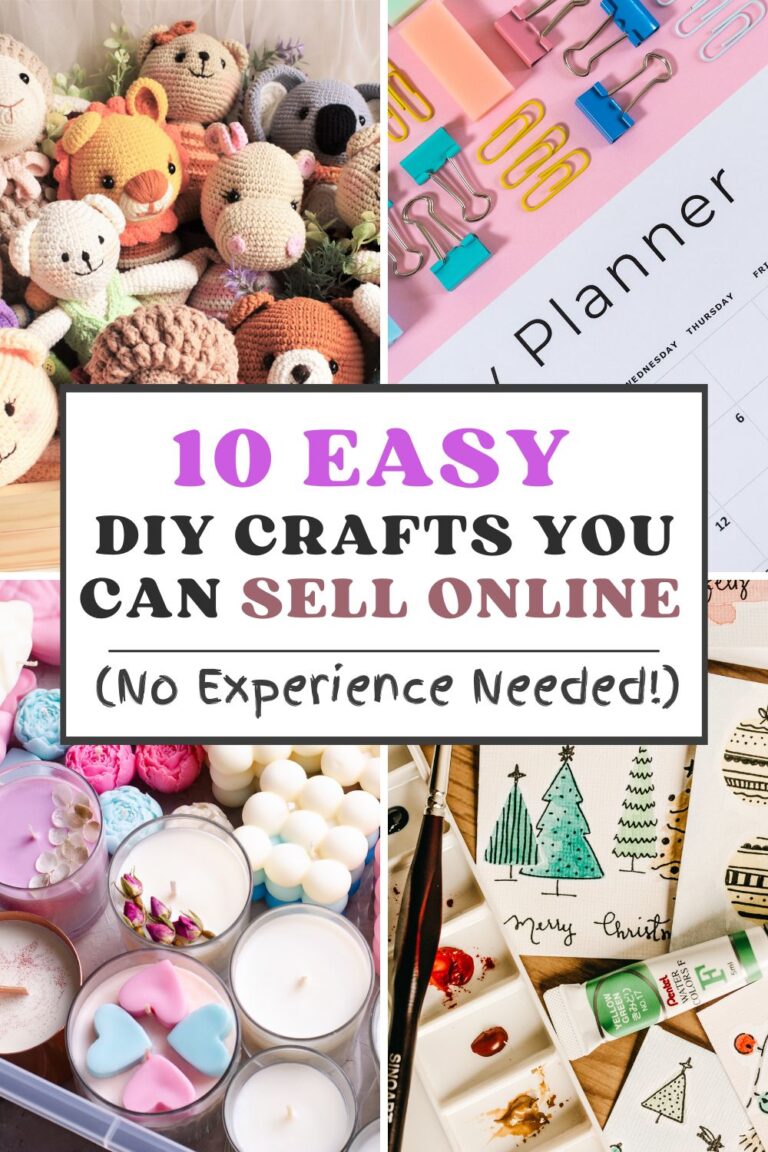How to Start an ETSY Shop
Starting an Etsy shop can be an exciting and rewarding experience. Etsy is a popular online marketplace where people buy and sell handmade, vintage, and unique factory-manufactured items. If you have a knack for crafting or a passion for unique products, this guide will help you set up your Etsy shop quickly and efficiently. Let’s dive into the steps and tips to get your shop up and running in no time.

Starting an Etsy shop may seem daunting at first, but with careful planning and dedication, you can create a successful and thriving business. Remember to research your niche, create attractive product listings, optimize for SEO, and provide excellent customer service. By following these steps and tips, you’ll be well on your way to running a successful Etsy shop in no time. Happy selling!
Check out also these posts about How to turn a Hobby into a Business and QUIZ: Find the perfect creative side hustle.
1. Research and Plan Your Etsy Shop
Before diving into the setup process, it’s crucial to do some research and planning. Here’s what you need to consider:
Identify Your Niche: What unique products can you offer? Research popular categories on Etsy to find a niche that suits your skills and interests.
Analyze the Competition: Look at other successful shops in your niche. Notice their product range, pricing, descriptions, and customer reviews.
Define Your Brand: Think about your shop’s name, logo, and overall branding. A cohesive and memorable brand can attract customers and build trust.
2. Create an Etsy Account
To start an Etsy shop, you first need an Etsy account. Follow these steps to create one:
Sign Up: Go to Etsy.com and click on “Register.” Fill in your email, name, and create a password.
Confirm Your Email: Check your email for a confirmation link from Etsy. Click the link to verify your account.
3. Set Up Your Shop
Now that you have an Etsy account, you can set up your shop. Here’s how:
Click on “Sell on Etsy”: This button is usually at the top right corner of the Etsy homepage.
Follow the Setup Guide: Etsy will guide you through the setup process, including choosing your shop preferences (language, country, and currency).
Choose Your Shop Name: Your shop name should be unique, easy to remember, and reflective of your brand. Etsy will check the availability of your chosen name.
4. Add Products to Your Shop
Adding products is one of the most critical steps in setting up your Etsy shop. Follow these tips to create attractive product listings:
Product Photos: High-quality photos are essential. Take clear, well-lit images from different angles. Use a plain background to highlight your product.
Product Descriptions: Write detailed and engaging descriptions. Include all necessary information like size, color, materials, and usage. Use keywords that customers might search for.
Pricing: Research the prices of similar items to ensure your pricing is competitive. Consider your material costs, time, and other expenses.
Shipping: Decide on your shipping methods and costs. Offer international shipping if possible, and provide estimated delivery times.
5. Set Up Payment and Billing
Etsy offers various payment methods to make transactions easy for customers. Here’s how to set it up:
Choose Your Payment Method: Etsy Payments is the most popular option, allowing customers to pay via credit card, debit card, PayPal, and other methods.
Set Up Billing: Enter your bank account details to receive payments from Etsy. Etsy will also ask for your tax information if applicable.
6. Optimize Your Listings for SEO
Search Engine Optimization (SEO) helps your products appear in search results on Etsy and other search engines. Here are some SEO tips:
Use Keywords: Identify keywords that potential customers might use to find your products. Include these keywords in your titles, tags, and descriptions.
Write Clear Titles: Use descriptive and keyword-rich titles. For example, instead of “Handmade Necklace,” use “Handmade Silver Pendant Necklace with Amethyst Stone.”
Fill Out All Sections: Complete all available fields in your product listing. The more information you provide, the better your chances of appearing in search results.
7. Promote Your Etsy Shop
Promotion is key to driving traffic to your Etsy shop. Here are some effective promotion strategies:
Social Media: Use platforms like Instagram, Facebook, and Pinterest to showcase your products. Post regularly and engage with your followers.
Blogging: Start a blog related to your products or niche. Blogging can help attract potential customers through search engines.
Email Marketing: Collect emails from your customers and send out newsletters with updates, promotions, and new product launches.
Etsy Ads: Consider using Etsy’s paid advertising to increase the visibility of your products.
8. Provide Excellent Customer Service
Customer satisfaction is crucial for the success of your Etsy shop. Here’s how to ensure a great shopping experience:
Respond Promptly: Answer customer inquiries quickly and professionally.
Handle Issues Gracefully: Address any problems or complaints with empathy and offer solutions, such as refunds or exchanges.
Follow Up: Send a thank-you message after a purchase and request feedback.
9. Monitor and Improve Your Shop
Regularly reviewing your shop’s performance can help you identify areas for improvement. Here’s what to look at:
Analytics: Use Etsy’s analytics tools to track your shop’s traffic, sales, and customer behavior.
Reviews: Read customer reviews to understand what people like and what needs improvement.
Adjust Listings: Update your product listings based on performance and feedback. Experiment with different keywords, photos, and descriptions.
10. Stay Compliant with Etsy’s Policies
To keep your shop running smoothly, ensure you comply with Etsy’s policies:
Understand the Rules: Familiarize yourself with Etsy’s seller policies, including prohibited items and intellectual property guidelines.
Keep Records: Maintain accurate records of your sales and expenses for tax purposes.
Update Policies: Regularly review and update your shop policies, such as shipping, returns, and privacy policies.
Additional Resources
For more detailed information and resources, consider the following:
Etsy Seller Handbook: A comprehensive guide from Etsy with tips and best practices for running a shop.
Etsy Community Forums: Connect with other Etsy sellers to share experiences and get advice.
Online Courses: Platforms like Udemy and Skillshare offer courses on starting and growing an Etsy shop.
Social Media Groups: Join Facebook groups or other online communities focused on Etsy sellers.
By leveraging these resources and continuously improving your shop, you can achieve long-term success on Etsy. Good luck!

